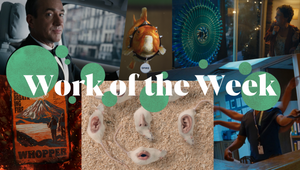
Can AI Become Truly Creative?

We’ve all read at least one article about Artificial
Intelligence and the impact it will have on the jobmarket over the next ten
years. ‘Who will be next’, ‘the death of advertising’, ‘copywriting to be automated’
– journalists, or the algorithms who replaced them, certainly know how to write
an impactful headline.
And if you read on, you will already know that AI is going
to replace – if any – the kind of content that looks like it was written by a
robot anyway. However, the fact that we get to keep our jobs for a little while
longer doesn’t imply that creative advertising and quality content are immune
from the influence of AI.
M&C Saatchi London, for instance, have put out a
prototype of an artificially intelligent ad that adjusts its output to the
reactions of bystanders, so as to measure success in real-time. The software
chooses combinations of images and text from a database, assesses the response
it generates from those looking at it, then promotes the copy and design which performs
best and eliminates the rest.
Despite the experiment generating a lot of attention for
Saatchi & Saatchi, it also showed how important quality content is for the future of
advertising. If the results offered by this Darwinian tool were to be taken
seriously, we’d end up covering the city with kittens and hearts just because
people react better to them.
Behavioural economics, though, has largely proved that
persuasion occurs on a deeper level and that most visual ‘nudges’ have a short
lifespan. In other words, once the novelty effect of ‘the ad that knows what
you’re thinking’ has passed, no one will remember the experience.
But what if computers managed to replicate human creativity?
Computational creativity, a simultaneously vague yet interesting research
field, puts together philosophy, mechanics, cognitive psychology and art in
order to try and understand how exactly the creative process works.
The application of any insight remains to be seen, but some
of the results achieved by the discipline over the past 20 years are absolutely
stunning.
BRUTUS, for instance, is a piece of software that can create
stories with a certain plot complexity – unfortunately they are not yet
available to the public, presumably because they aren’t yet very captivating
from a linguistic point of view.
JAPE is programmed to invent funny puns, ASPERA produces
fresh new poems if fed with a set of words and examples and IAMUS wrote a beautiful
score that was played by the London Symphony Orchestra. Google has also released
DeepDream, an opensource software which detects faces and patterns in images,
enhances them via algorithmic pareidolia and finally produces truly spectacular
psychedelic dreams which blur the border between art, emotions and computers.
Still, you might argue, a machine can’t learn to replicate
the genius of, say, Picasso or Magritte. Well, wrong. A group of German researchers
developed a machine that can create new work in the style of whatever artist
you might like. If you’ve ever wondered how Picasso would have painted a
portrait of President Obama, you now know.
Each one of us may find computational creativity’s advances
scary, banal, pioneering or irrelevant for content creation. Well, that depends
on the definition of creativity we believe in.
Is it a state of mind, a spark of genius or does it follow
certain sets of rules which could eventually be translated into a self-sustainable
code, able to generate touching ideas and spotless executions?
And more importantly, what is the role of all the software
that helps us create content beyond the possibilities offered by our human
capabilities, such as making a portrait even if we can’t draw, recording a
guitar solo when we’ve never played an actual guitar or suggesting words and associations
when we are a bit short on ideas?
Crucially – does AI just help to develop an idea that was
already there or does it actively participate in the process? And if it’s the
latter, does AI claim some ownership of the creative process?
Admittedly, there are more questions than answers, but we
can assume that creativity always starts with a spark, an idea, an emotion, a
desire to reach someone else and communicate a state to them. Whilst a computer
can mimic a Picasso, ideation and that raw moment of pure creation are currently
only accomplished by humans.
Perhaps in a hundred years from now androids will have perfect human brains and they’ll be able to ‘feel’ and understand emotions. Until then, creativity and communication will remain a task in which humans perform better than machines, regardless of the quantity of data and associations the latter can produce.













